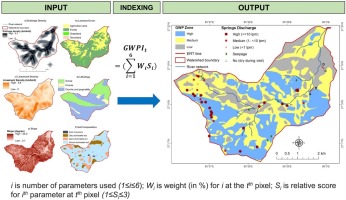This study applies a two-step validation method of a groundwater potential mapping approach and can improve groundwater mapping for data scarce regions.
A study to determine the knowledge and attitudes of future physicians in the Cordillera Region of the Philippines towards climate change.
Alzheimer's disease is a strong predictor in survival after hip fracture surgery.
This Research Paper supports SDGs 5 and 10 by applying machine learning techniques to understand gender-based violence in contexts with low prevalence data, offering insight into factors associated with non-marital sexual violence in India.
This article supports SDGs 7 and 9 by introducing interpretable artificial intelligence (AI) tools, especially proxy models based on artificial neural networks, efficient variable analysis and optimal value prediction of membrane electrode components in proton exchange membrane fuel cells, thereby improving their performance and reducing computational costs.
Scientists and governments of South Asian countries can work together more efficiently in the future, not just to react to the urban socio-economic and environmental problems of today, but work with superior foresight today to make strong decisions for tomorrow.
Water is essential for the life, but many people lack the accessibility to clean and healthy drinking water and die as a consequence of water-borne infections.
Genetic polymorphism of the SLC6A4 gene is associated with several behavioral disorders, including depression. Since studying the total nonsynonymous single nucleotide polymorphisms (nsSNPs) of the SLC6A4 gene at the population level is a difficult task, we aim to utilize in silico approach to detect the most deleterious nsSNPs of the SLC6A4 gene. In our study, 7 computational tools were used in the initial stage, including SIFT, Polyphen-2, PROVEAN, SNAP2, PhD-SNP, PANTHER, and SNPs&GO to find out the most damaging nsSNPs.
The present study aimed to investigate the attitude and empathy of youth towards physically disabled persons.
This study supports SDGs 13,14 and 15 by unveiling the palaeoenvironment in response to global climate changes.

